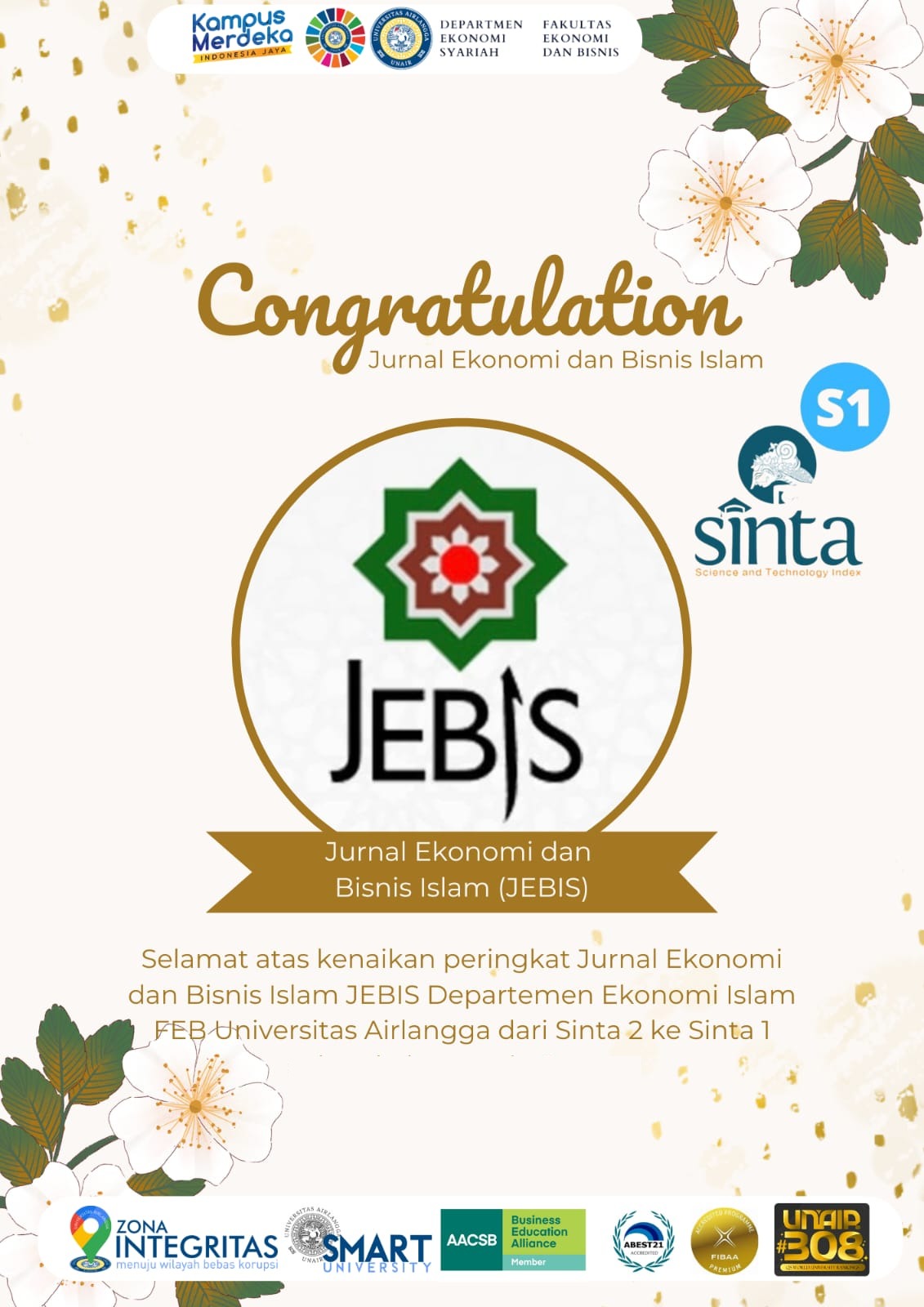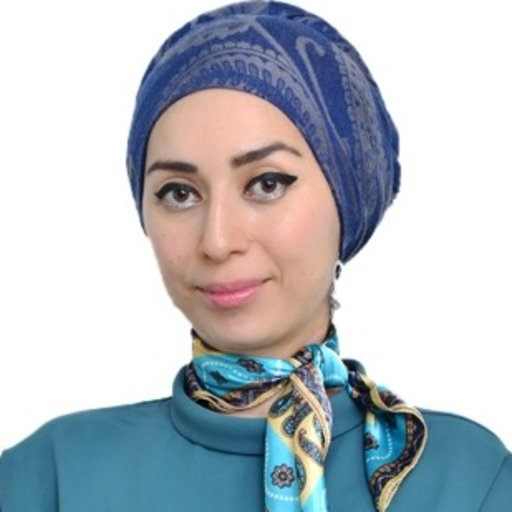MACROECONOMY IMPACTS ON INTERNATIONAL TRADE BETWEEN INDONESIA AND ISLAMIC COUNTRIES
Downloads
As one of the members of the Organisation of Islamic Corporation (OIC), Indonesia has excellent trade prospects. Therefore, this study has a purpose to examine the impact of macroeconomics factors on trade between Indonesia and intra-OIC countries. The variables of macroeconomics in this study consist of country risks, inflation, exchange rate, oil price, and economic growth. Quantitative is the right method for this study, applying Ordinary Least Square (OLS) regression with the help of EViews. The data used for the analysis is a time horizon with annual frequency from 1986 to 2016. Furthermore, finding shows that almost all variables of macroeconomics play an insignificant role in determining the trade between Indonesia and Islamic countries. However, the oil price is the only variable to show its contribution towards trade between Indonesia and intra-OIC countries. The results indicate that macroeconomic variables do not contribute to the key decisions for conducting trade internationally. Political factors and bilateral treaties become better variables to explain Indonesia's trade with other Islamic countries.
Keywords: Country Risk, International Trade, Macroeconomic, Organisation of Islamic Corporation, Indonesia.
Abidin, I. S. Z., Abu Bakar, N. A., & Sahlan, R. (2013). The Determinants of Exports between Malaysia and the OIC Member Countries : A Gravity Model Approach. International Conference on Applied Economics (ICOAE) 2013, 5(13), 12–19. https://doi.org/10.1016/S2212-5671(13)00004-X
Acar, M., Alpay, S., Bakimli, E., & Koc, Z. Z. (2009). South”East Asian Integration in the Context of OIC: Implications of Free Trade among Malaysia, Indonesia and Bangladesh. Journal of Economic Integration, 24(1), 1–18.
Agusalim, L. (2017). The Dynamic Impact of Trade Openness on Poverty: An Empirical Study of Indonesia's Economy. International Journal of Economics and Financial Issues, 7(1), 566--574.
Ahmed, S., & Munidial, B. (1993). Appropriate macroeconomic management in Indonesia's open economy. World Bank Discussion Papers, 191.
de Groot, H. L. F., Linders, G. J., Rietveld, P., & Subramanian, U. (2004). The institutional determinants of bilateral trade patterns. Kyklos, 57(1), 103–124. https://doi.org/10.1111/j.0023-5962.2004.00245.x
Factors Affecting Current Account Balance of Turkey : a Survey With the Cointegrating Regression Analysis. (2015). 4, 633–658. https://doi.org/10.17261/Pressacademia.2015414533
Ghani, G. M. (2011). The impact of trade liberalisation on the economic performance of OIC member countries. Journal of Economic Cooperation and Development}, 32(1), 1–18.
Ginting, A. M. (2013). Pengaruh Nilai Tukar Terhadap Ekspor Indonesia. Buletin Ilmiah Litbang Perdagangan, 7(1), 1–18.
Gnimassoun, B., Joí«ts, M., & Razafindrabe, T. (2017). On the link between current account and oil price fluctuations in diversified economies: The case of Canada. International Economics, 152(July), 63–78. https://doi.org/10.1016/j.inteco.2017.07.001
Groebner, D. F., Shannon, P. W., & Fry, P. C. (2014). Business Statistics A Decision-Making Approach Groebner Shannon Fry (9th ed.). Pearson Education Limited.
Gruere, G. P., Bouí«t, A., & Mevel, S. (2007). Genetically modified food and international trade: The case of India, Bangladesh, Indonesia, and the Philippines. https://doi.org/10.22004/ag.econ.42359
Henry, C., & Longmore, R. (2003). Current Account Dynamics and The Real Effective Exchange Rate : The Jamaican Experience. (March), 1–30.
Hoti, S., & McAleer, M. (2003). An Empirical Assessment of Country Risk Ratings and Association Models. Journal of Economic Surveys, 18(4), 539–550. https://doi.org/10.1111/j.0950-0804.2004.00230.x
Hubbard, G. R., O'Brien, A. P., Eid, A. G., & El Anshasy, A. (2011). Economics (Arab World). Essex: Pearson.
Huntington, H. G. (2015). Crude oil trade and current account deficits. Energy Economics, 50, 70–79. https://doi.org/10.1016/j.eneco.2015.03.030
ICRG. (2016). ICRG Methodology. International Country Risk Guide, 1–17. Retrieved from http://www.prsgroup.com/about-us/our-two-methodologies/icrg
Konac, E. H. (2000). THE EAST ASIAN CRISIS: LESSONS FOR OIC COUNTRIES Enver Hakan Konaç *. Journal of Economic Cooperation, 2(2), 15–44.
Madura, J. (2010). International Corporate Finance. In North American Journal of Economics and Finance (Vol. 7). Joe Sabatino.
Madura, Jeff. (2010). International Corporate Finance. Joe Sabatino.
Mawardi, I., Widiastuti, T., & Sukmaningrum, P. S. (2019). The Impact of Macroeconomic on Islamic Stock Prices: Evidence from Indonesia. The 2nd International Conference on Islamic Economics, Business, and Philanthropy (ICIEBP) Theme: "Sustainability and Socio Economic Growth,” 499–509.
Muhammad, A. N. (2012). Dampak fluktuasi harga minyak dunia terhadap perekonomian indonesia. Buletin Ilmiah Litbang Perdagangan, 6(2), 189–210.
Muhammad, Hye, Q. M. A., Tiwari, A. K., & Leití£o, N. C. (2013). Economic growth, energy consumption, financial development, international trade and CO2 emissions in Indonesia. Renewable and Sustainable Energy Reviews, 25, 109--121.
Muslim, A. (2016). Apakah Perdagangan Menjadi Pertimbangan Investasi? Kajian Ekonomi & Keuangan, 20(2).
OIC and SESRIC. (2019). OIC ECONOMIC OUTLOOK 2019: Mobilizing Financial Resources for Development.
Pertiwi, R. S., Herianingrum, S., Al Mustofa, M. U., & Muhammad, M. (2019). Studi Empiris Government Effectiveness dan Trade Openness terhadap Perdagangan Internasional. Jurnal Ekonomi, XXIV(03), 351–368.
Rusmita, S. A., & Cahyono, E. F. (2016). Pengaruh variabel ekonomi makro, pembiayaan dari bank umum syariah dan IKNB syariah terhadap ekspor indonesia tahun November 2013-April 2016. NISBAH: Jurnal Perbankan Syariah, 2(2), 235--242.
Tambunan, T. T. H. (2009). Trade liberalization effects on the development of small and medium-sized enterprises in Indonesia: A case study. Asia-Pacific Development Journal, 15(2), 35–59. https://doi.org/10.18356/d63e6339-en
Uz, I. (2010). Determinants of Current Account: Relation between Internal and External Balances in Turkey. Applied Econometrics and International Development, 10–2, 115–126.
Zainal Abidin, I. S., Jantan, M. D., Mohd Satar, N., & Haseeb, M. (2014). Trade linkages between Malaysia and the OIC member countries: Empirical evidence based on gravity model. American Journal of Applied Sciences, 11(11), 1938--1944.
Zuhroh, I., & Kaluge, D. (2007). Dampak Pertumbuhan Nilai Tukar Riil Terhadap Pertumbuhan Neraca Perdagangan Indonesia (Suatu Aplikasi Model Vector Auto Regressive,VAR). Journal of Indonesian Applied Economics, 1, 59–73.
Copyright (c) 2020 Jurnal Ekonomi dan Bisnis Islam (Journal of Islamic Economics and Business)

This work is licensed under a Creative Commons Attribution-NonCommercial-ShareAlike 4.0 International License.
- Every manuscript submitted to JEBIS must obey to the policy and terms set by Journal of Economics and Business Islamic.
- Publication rights on the contents of manuscript published by JEBIS is owned by JEBIS under consent and approval by the corresponding author(s).
- Full text of electronic publication of manuscripts can be accessed free if used for the purpose of education and research according to copyright regulation.
- Share ” copy and redistribute the material in any medium or format
- Adapt ” remix, transform, and build upon the material
- You must give appropriate credit, provide a link to the license, and indicate if changes were made. You may do so in any reasonable manner, but not in any way that suggests the licensor endorses you or your use.
- You may not use the material for commercial purposes.
- If you remix, transform, or build upon the material, you must distribute your contributions under the same license as the original.
Creative Commons Attribution-NonCommercial-ShareAlike 4.0 International License.





.png)














